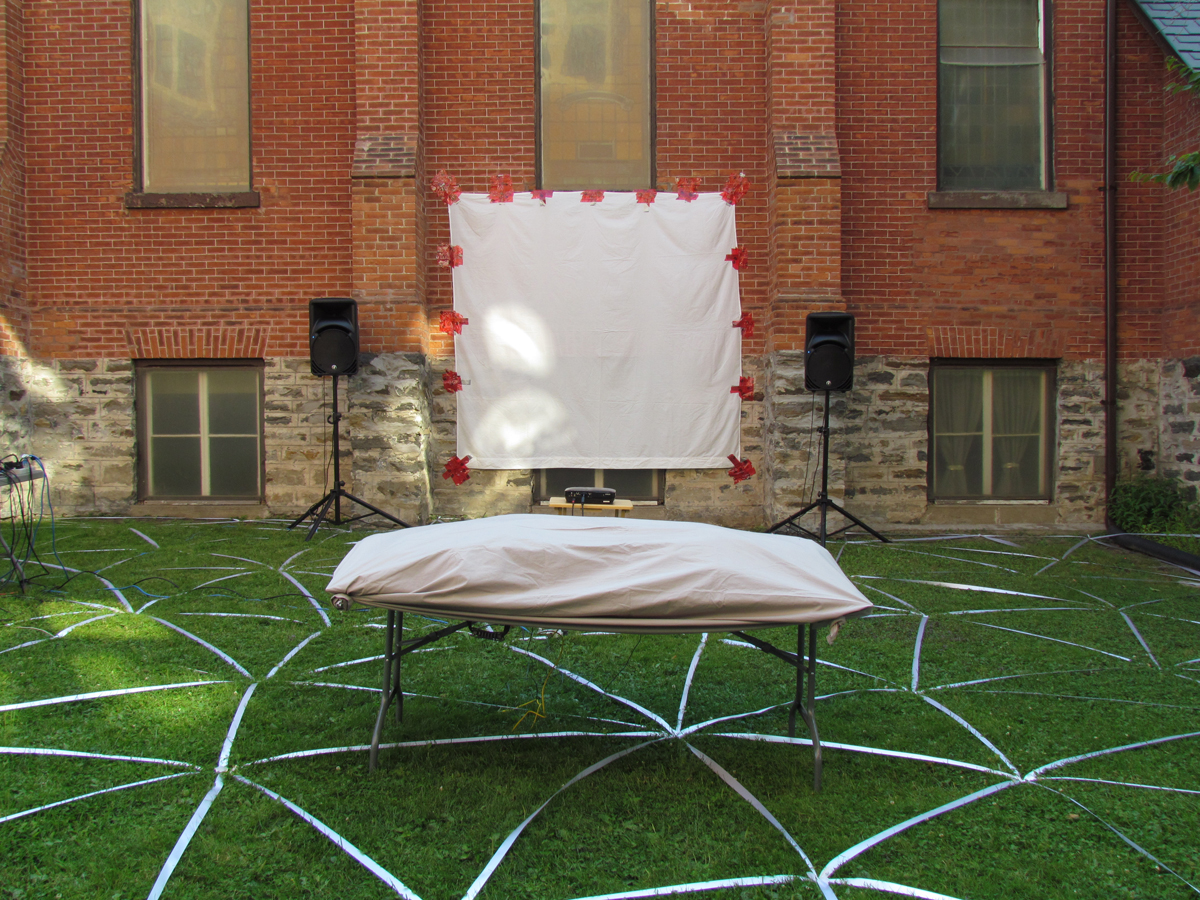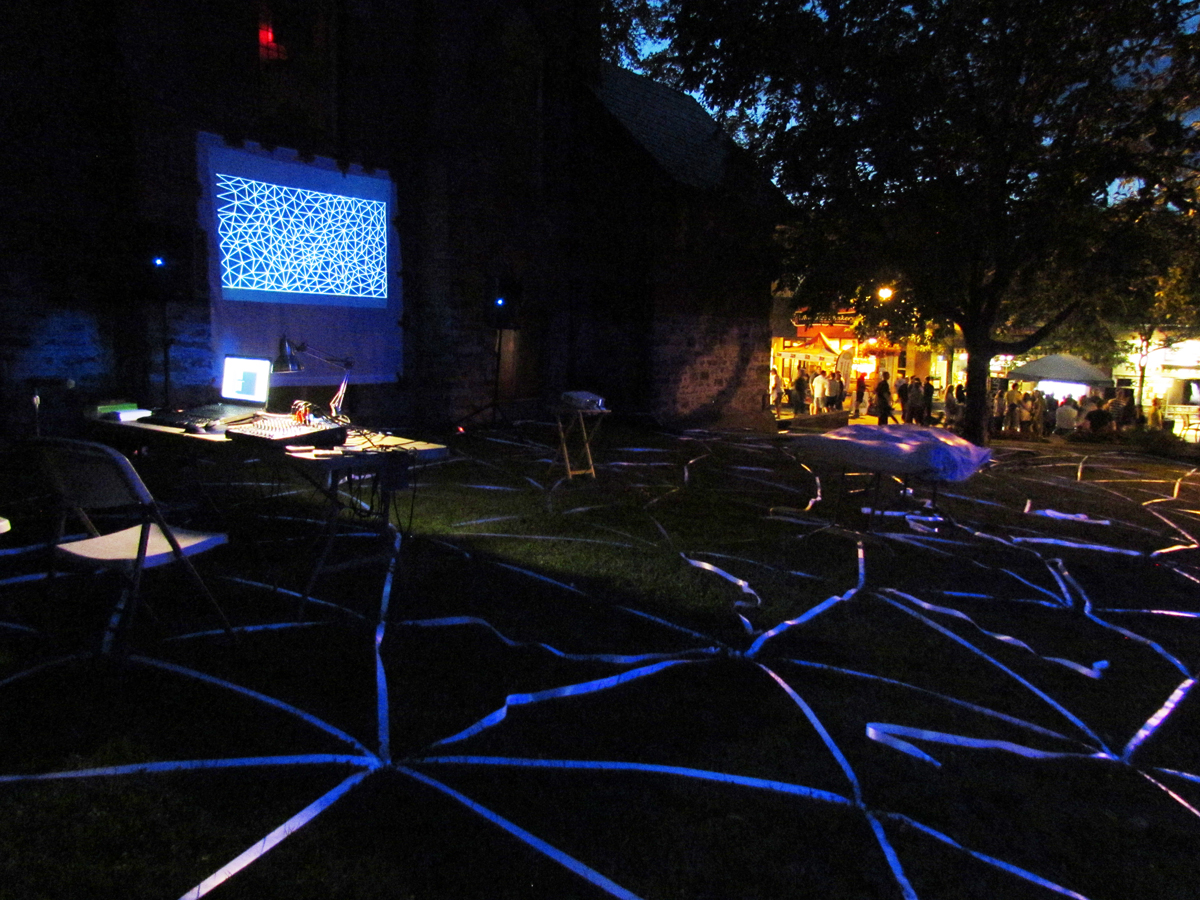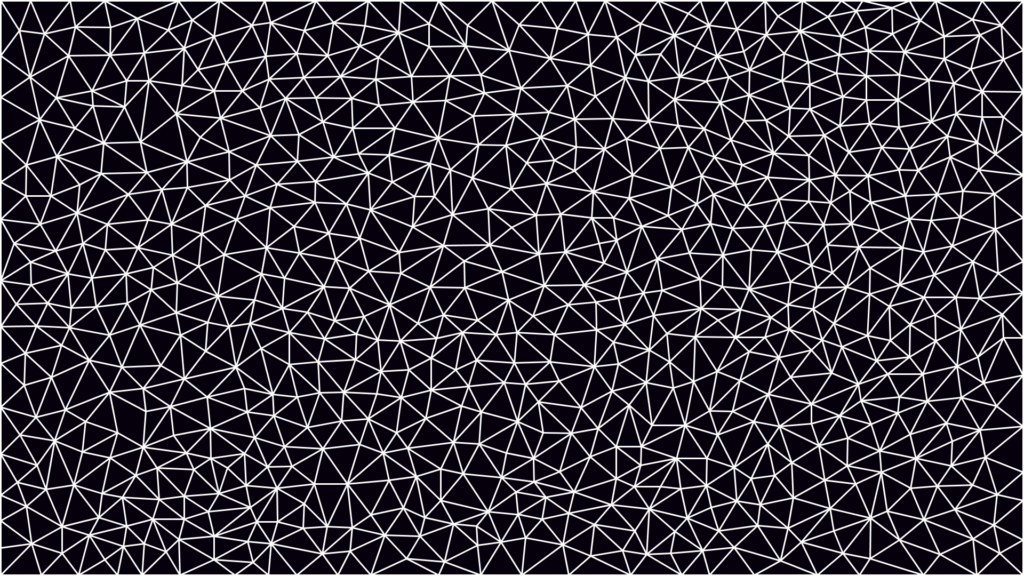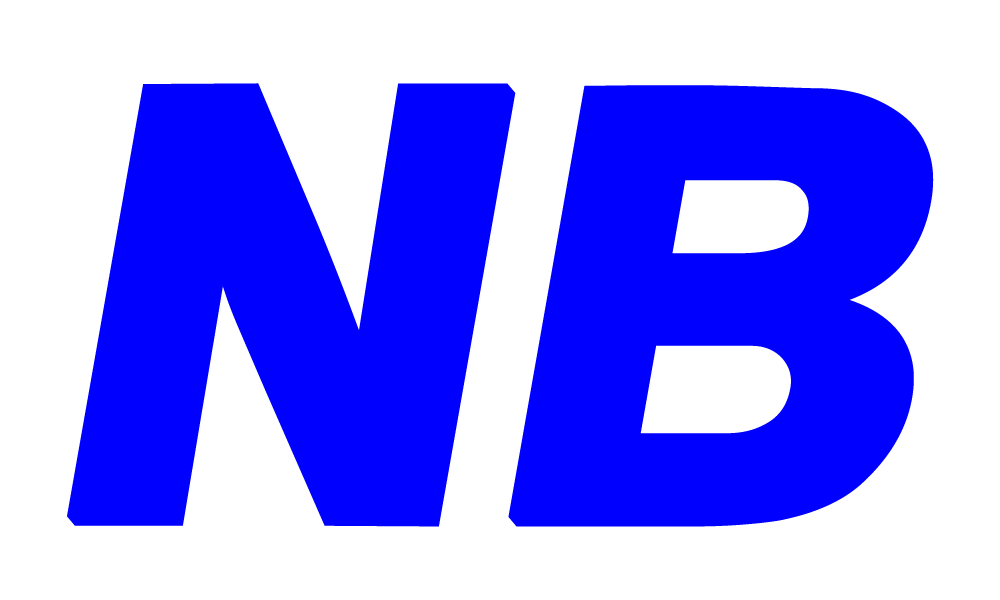
NETTT Blaster
Since 2016 I have been presenting an interactive installation controlled by software that I have written (using Processing/Java, SuperCollider for the audio, and Arduino for the sensors).
Participants are initially presented with a projection screen, speakers and a touch sensor table. The sensors control the projected visuals and trigger audio to produce spontaneously formed animations with accompanying audio compositions.
(the two photos above are from Nuit Blanche North 2017)
More details about this project are available at each of the links below but briefly, this is what this project is about:
I am interested in studying human nature, consciousness, living presence, psyche and I am using this installation as the instrument to accomplish this. A theme and a source image to represent that theme is chosen and then triangulated. This process of triangulation is one way to translate living presence into a precise geometric and numerical form:
before:
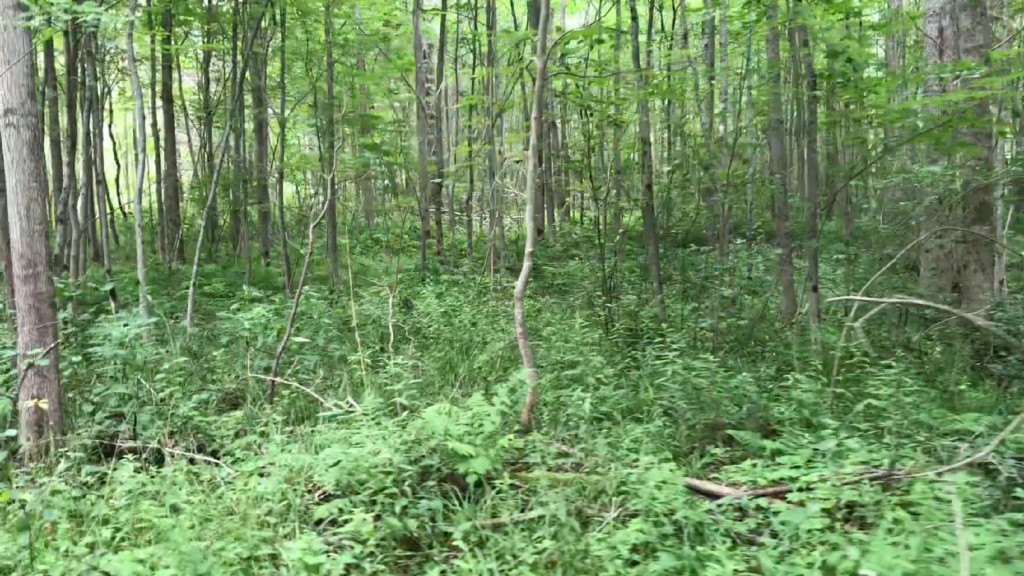
after:
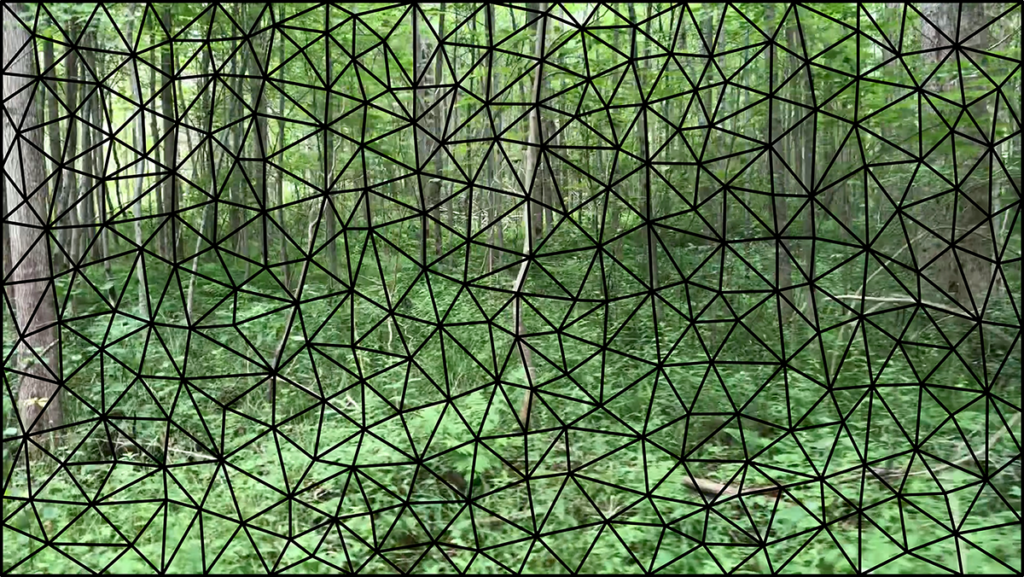
This triangle mesh, the net, also serves as the interface, the instrument through which all activity takes place. Sensors on a table are activated by participants touching them, triggering events: triangles filling in with colours and images along with the playing of accompanying samples or notes. ‘Playing the net’ – playing the essence of the original source image as an instrument, as a non-linear sample player. The sonic material that populates the triangles is a composition I have created and sounds I have collected all relating to a theme – likewise for the images. The triangle mesh is gradually filled up by the participant’s actions thereby generating a collective artwork, a collective re-mix of the material. While this is going on, the software is recording which sensors were activated and when, thus producing a table of data – data which serves as a precise document of collective psyche. All of the factors that contribute to this activity; the initial theme, the audio and visual work I have produced to communicate that theme and that populates the triangle mesh, the environment within which the installation is presented, the participant’s response to that theme through their interactions – all of these factors are encoded in the rather lean table of data generated by the sensors and recorded by the software.
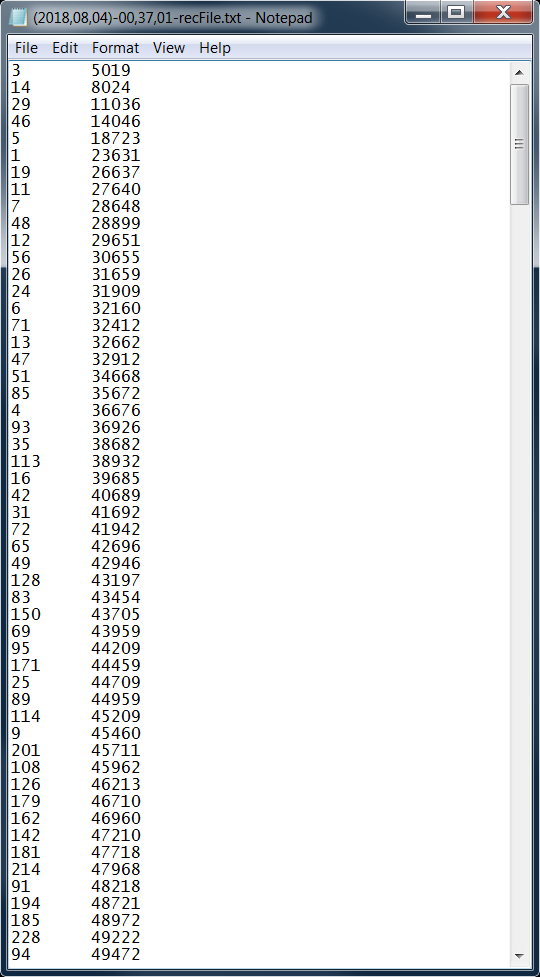
An example of a portion of a recording in data form (text file is 370 lines long). Numbers on the left are which triangles were activated and the numbers on the right are when, in milliseconds since the start time – and that it.
This is one of the main functions of this installation, to generate data based on particpant’s activity – to generate a precise document, a table of numbers that represents living creative activity. The elaborate processes I have developed to acquire this data is so that it is produced by meaningful and inspired activity. The more focused the activity, the more vivid the results.
What you can do with this data is an open question and there are many avenues I am currently exploring. It is no accident that I have chosen the graph as the core architecture. I am continually elaborating on its use as a network. I am exploring self-organizing, non-linear, dynamical systems and this installation was designed with that in mind – to serve as the foundation for staging these interactions and exploring their possibilities. Ultimately I seek to generate, through participant interaction, emergent phenomenon which I believe is the key to illuminating the unknown – the window into hidden worlds, worlds that constantly surround us but remain invisible, both inner and outer, with consciousness, psyche, serving as the channel. This is the magic of art, science, and programming. I use the triangle mesh as the instrument – the medium capable of recording, storing, transforming, and transmitting the data of living presence and the systems, algorithms, and mathematics that I am employing articulate these means.
Some early attempts at visualizing and sonifying the data can be found in the 2017 and 2018 links below – knots and trees for example. Each recording produces a different knot, a different tree, a different signature, a different ‘reading’.
Using artwork as a document of psyche.
an empty noise field – a rendering of nothing
Links:
2016 – first iteration
WR-NETTT, Warbler’s Roost (NAISA North), July 29-31, 2016, South River, Ontario
The first presentation of this software. An initial source image was triangulated and the resulting mesh was used as the interface and the instrument through which all activity took place: recording, storage, transformation, and playback. Interaction was through the mouse which was used to activate triangles. This activity was simply recorded and played back. During development, a lot of attention went to translating a line drawing produced in Illustrator into a field of triangles that can be played like an instrument. A ‘non-linear sample player’.
second iteration – 2017:
2017 – second iteration
crystal bowls/Unsettle150, Saturday, July 29, 2017 – Nuit Blanche North – Huntsville, Ontario
Much was added to and elaborated upon this year: the addition of the controlling sensor table, two modes of analysis, sensors, and rgb, a new system for recording and playing back triangles, and a way of loading source images that resulted in a triangle mesh collage.
2018 – third iteration
presented at two events:
knot and trre, Nuit Blanche North 2018 – Saturday July 28, 2018 – downtown Huntsville, Ontario
knot and trre, Electric Eclectics – Friday August 3 to Sunday August 5, 2018, Meaford, Ontario
A lot of time and energy went into refactoring the software. I added a ‘painting’ mode, whereby the triangles are replaced by ‘brushstrokes’ of colour that gradually fill in to form a painting. Two new modes of analysis were added: knots and trees along with vertices and edges for playback. I also started using SuperCollider to generate synthesized sounds – wow, what a difference.
2019 – fourth iteration
CSB, Electric Eclectics – Friday August 2 to Sunday August 4, 2019, Meaford, Ontario
Very early start of the CSB (Cybernetic Synth Blaster). Added a grid mode – each colour corresponding to a key that has been pressed – very simple but makes for a nice, direct, representation of the data generated by creative activity and beautiful too.
2020 – fifth iteration
Menu Advisor
Originally for Nuit Blanche North 2020, but the show was cancelled due to the pandemic.
This was going to be a fun and delightful menu that people could arbitrarily generate through the use of sensors (there would have been no way that participants would have been able to tell which sensor did what). This would generate text that would form a menu filled with wonderful, whimsical, fantastical, delightful dishes that all could rejoice upon. The whimsicality will be missed.

